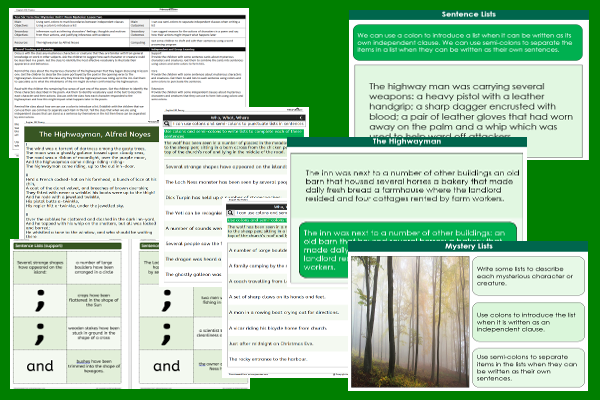Lesson Two – Mystery Lists

This English teaching pack for Key Stage Two gets the children to practise using colons and semi-colons to compose lists in sentences about a range of different mysterious characters and creatures.
The class can suggest how poets can structure their poems and use descriptive vocabulary to sequence and illustrate events in the narrative sequence of events.
Download this teaching pack including a lesson plan, classroom activities and an interactive presentation to teach the children to practise using colons and semi-colons to compose lists in sentences about a range of different mysterious characters and creatures
Activities in this teaching pack include a shared reading text to identify and describe how poets use figurative language to describe people, places and events in a narrative poem and a set of differentiated cards and worksheets to build lists related to the story of the Highwayman using colons and semi-colons to link independent clauses.
The interactive presentation gets the children to explore how to use colons and semi-colons to compose lists in sentences about mysterious characters and creatures.
This lesson is part of an English scheme of work to get the children to explore and adapt vocabulary used in a narrative poem to describe characters and settings. There are teaching activities for shared learning, differentiated worksheets to support independent learning and interactive presentations to introduce concepts and key skills.
-

World Countries
Research and add facts and information to sentences using brackets about some of the different countries that can be found around the world
-

Sports Poems
Explain and model how to compose and present poems using special line structures and rhyming patterns to illustrate actions and themes connected to different sports
-

Bonfire Party
Select and use formal and informal language to compose invitations, letters and speeches for a family and town party on Bonfire Night
-

Digit Combinations
Practise building and comparing a range of numbers by combining and matching sets of digits with different number values
